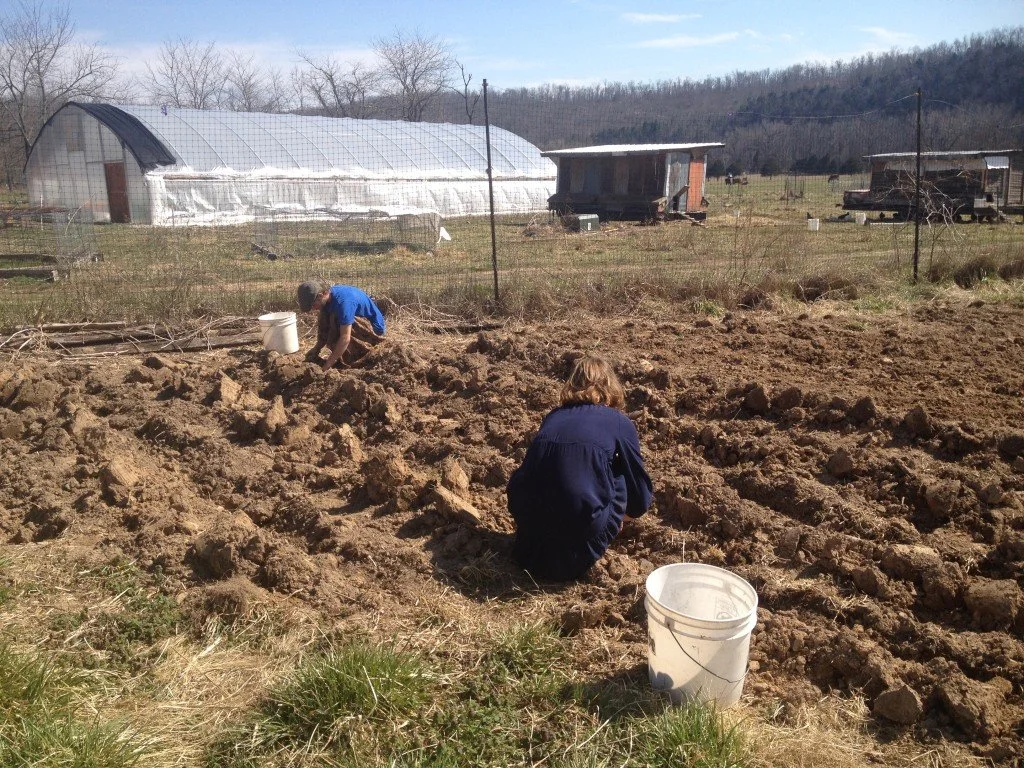
Garden
East Wind’s gardens have undergone a large expansion in the past five years. In total, our orchards and gardens encompass over four acres of land. In the summer of 2015, a high tunnel was built using money from a state grant. We are excited to be experimenting with this new season extender.
The Upper Garden, located at the center of community, has been under cultivation for much of East Wind’s history. We maintain soil fertility by making our own compost (as well as occasionally purchasing compost when deemed necessary) and cover cropping beds when there is a gap between vegetable planting. Crops are ideally rotated every four years to reduce pest pressure and nutrient drawdown of the soil. In the Upper Garden we typically grow annual vegetables including root crops, greens, onions and garlic, and other crops that need less space.
The experience of gardening allows us to become more intimate with the land we live on and with the crops that sustain us. Our community gardens enable us to indulge in an immense variety of flavors and to experiment with vegetable varieties that strike our fancy. The garden provides a large amount of the produce we consume and every year we are checking off more veggies that we are able to supply year round.
The Mulberry Garden, or Lower Garden, is East Wind’s second garden and it is named for a large mulberry tree at its center. Some areas are relatively flat and good for annual cultivation. Here we tend to produce more of the crops that we grow a large amount of, like tomatoes, potatoes, sweet potatoes, corn, melons and squash. A portion of the lower garden is dedicated to fruit and nut trees. We have been planting a number of trees in the past seven years ranging from common apples, pears and peaches, to more exotic jujubes, goumis and medlars. We have also planted chestnuts, hazelnuts, and pecans. We are also growing other perrenials, including blueberries, raspberries, blackberries, strawberries, asparagus, and medicinal herbs.


